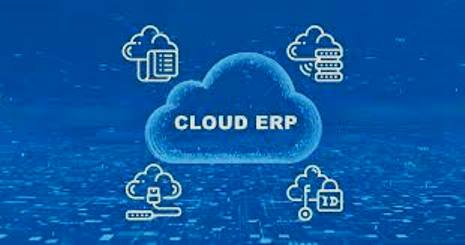Enterprise resource planning (ERP) systems have undergone significant evolutions and revolutions over the past few years. From increased capacity, scale and agility to refined business functionality, ERP is changing how companies manage disruption, business continuity, growth and long-term success. This capability is reflected in its current growth statistics with its market size expected to increase beyond $49.5 billion by 2025, according to Gartner, and its contribution to the $570 billion price tag attached to enterprise software as a whole, according to Statista.
ERP’s ubiquity lies in its functionality. It offers a solid foundation from which the organization can integrate multiple operational solutions across backend data, finance, applications and management software. With ERP in play, companies can refine how they handle administration tasks, HR, people, processes and data, and they can leverage these systems to drive growth, improve decision making, and take control over financial resources more efficiently. The latter has become an immensely powerful weapon in the enterprise arsenal – as evidenced by the impressive growth of financial management software (FMS) of 7%.
RELATED: The Future of ERP is in the cloud
Amidst this impressive growth and innovation, ERP has also changed flavor. It now comes in cloud and on-premise, and both options are relevant to the enterprise as they both deliver immense capability within different environments. While pundits of cloud may cry that on-prem is dead, the reality is that on-prem ERP has become as much of a trend, and delivers precisely the right impact to the business. The defining factor isn’t where the ERP is located, but how its services meet the very unique needs of each business.
Traditionally, on-prem ERP systems have been perceived as a risk. Ageing architecture, limited scale, end-of-life operating systems, unexpected vulnerabilities, and weighty functionality are the challenges most mentioned when it comes to ERP platforms on site. However, this is not a clear picture of how ERP truly measures up within the on-prem environment. Reality is actually what the company makes it.
“On-premise ERP is as much a trend as the cloud for several reasons,” says Stephen Howe at Times 3 Technologies. “Many companies aren’t ready for the enormous time and money investment that goes hand in wallet with the move to cloud so they’re investing into hybrid ERP solutions that connect the best of both worlds. This allows for them to curate an ERP solution that fits their business risk profile and strategy without compromising on system integrity.”
Another driving factor behind the demand for on-prem ERP is control. Many companies host systems in their own environments so they can retain control over their information and have complete visibility into regulatory requirements, compliance and business data. They want the peace of mind that comes with knowing that information is securely wrapped within the enterprise ecosystem. While this may seem an expensive investment into infrastructure, the total cost of ownership is lower over the long-term and offers the big benefit of richer customization and control.
“An on-prem system is limited only by the enterprise’s own imagination,” says Howe. “Owning the ERP license and implementing a comprehensive on-prem solution means that every process and step can be customized to fit what the business really needs to achieve its goals, and streamline its operations. It’s a big tick in the plus column of own versus rent – the upfront investment may be higher, but there are no monthly costs and there is value in knowing that this is your sandpit and you can play in it however you want.”
Cloud asks that companies pay a monthly fee and often there are additional costs associated with cloud implementations that only become apparant later in the process. This is a risk that on-prem bypasses completely, plus, with the right teams and support, it also gives the business better control over system security. It is an end-to-end solution in every sense – ensuring that the enterprise takes control across every touchpoint so that it can remain efficient, flexible and ahead of the competition.
Sage X3 offers organizations a comprehensive on-prem and cloud-based ERP platform that can be customized and curated to fit very specific business requirements. With Sage X3, enterprises can stay fully on-prem and still enjoy next-generation business management that’s cost-effective, scalable and secure. They can also explore hybrid and full cloud options at a fraction of the cost that comes with the traditional ERP system, embedding agility in every part of the business. Times 3 Technologies, a Sage Platinum Partner, is a Sage X3 implementing partner, providing organizations with a fully connected, highly agile and transparent ERP platform that will redefine expectations and is light years ahead of the trends.





























